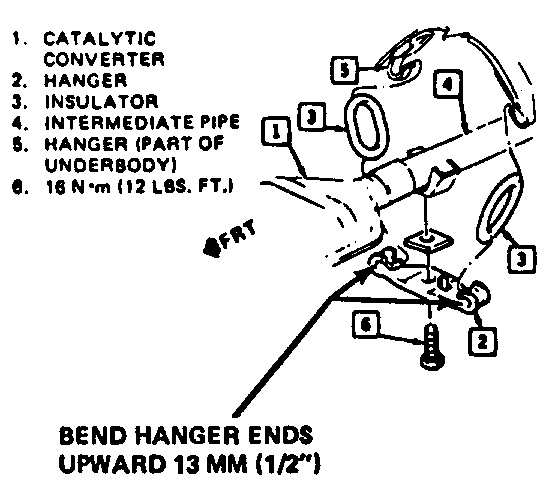ENGINE VIBRATION 1100-1300 RPM RANGE (NEW PARTS)

MODELS AFFECTED: 1986-1988 LESABRES AND ELECTRAS WITH 3.8L LG3 V6 ENGINE (VIN CODE 3)
Some 1986-88 LeSabres and Electra models equipped with a 3.8L engine may exhibit a shake/vibration in the 1100-1300 engine rpm range. The conditon could be described as a shake/vibration from the floor pan, seat, steering wheel and/or instrument panel at slow speeds (0-15 mph) or as a shudder/ chuggle at speeds of 45-55 mph with the Torque Converter Clutch (TCC) engaged. To effectively minimize this condition, use the following repair procedure:
1. Verify engine performance
All cylinders firing correctly Expected normal ALDL scan tool readings
2. Check engine mounts for ground out or stress condition. If vehicle is a 1986 LeSabre model, refer to bulletin 86-6-9A for additional information.
3. Remove the engine crankshaft balancer and install a new balancer, part number 25532179. (If vehicle is a 1986 model, a longer crankshaft balancer bolt, part number 25530415, must be installed with the new balancer.
NOTICE: To ensure the interrupter ring on the new balancer has not been damaged prior to installation, use Kent-Moore Crankshaft Sensor Adjusting Tool J-37089 to check concentricity of the interrupter ring and for correct crankshaft sensor adjustments.
Torque balancer bolt and washer to 270 N.m (200 lbs. ft.)
Parts are currently available from GMSPO
4. Disconnect the exhaust pipe from the exhaust manifold. Using a high temperature anti-seize compound, lubricate the exhaust pipe seal (donut) and reinstall the pipe.
5. Remove the intermediate exhaust pipe hanger and rubber insulators. Refer to figure 1. Bend the hanger ends upward 1/2". Lubricate the rubber insulators with silicone grease and reinstall the hanger and insulators.
WARRANTY INFORMATION
Labor Operation Number: T5186 Labor Time: .8 Hours Trouble Code: 92

General Motors bulletins are intended for use by professional technicians, not a "do-it-yourselfer". They are written to inform those technicians of conditions that may occur on some vehicles, or to provide information that could assist in the proper service of a vehicle. Properly trained technicians have the equipment, tools, safety instructions and know-how to do a job properly and safely. If a condition is described, do not assume that the bulletin applies to your vehicle, or that your vehicle will have that condition. See a General Motors dealer servicing your brand of General Motors vehicle for information on whether your vehicle may benefit from the information.
